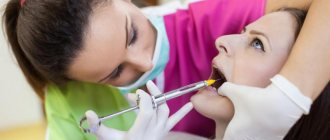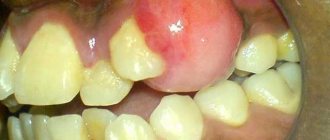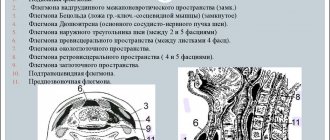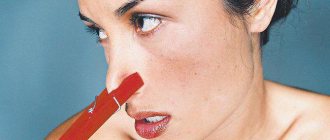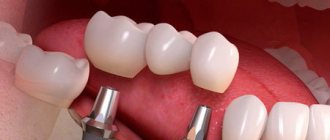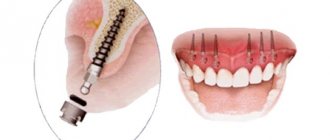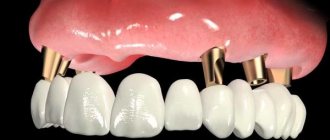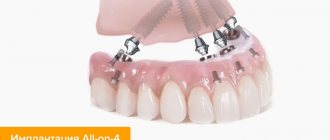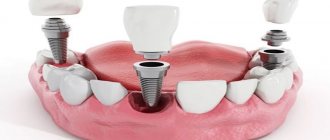From this article you will learn:
- what are All-on-4 and All-on-6,
- dental prosthetics on 4 implants – cost (for 2020),
- Everything on 4 implants in Moscow – reviews, before and after photos.
The article was written by a practicing implant surgeon.
All-on-4 is an implantation protocol for complete absence of teeth in the jaw, which involves the installation of four dental implants, as well as the fixation of a permanent bridge on them. Dental prosthetics on 4 implants are carried out according to the “immediate load” protocol. This means that within 1-3 days after surgery, a permanent (adaptive) bridge will be screwed to your implants. Moreover, with this prosthesis you will immediately be able to chew moderately hard food.
All-on-4 Implantation is a registered trademark owned by ]Nobel Biocare[/anchor] (Switzerland). This is one of the leading companies producing dental implants, which also developed the All-on-4 implantation technique. Its uniqueness lies not only in the fact that a patient with complete absence of teeth can immediately receive a fixed denture. It is important that this technique allows implantation without the use of bone grafting - even with a significant deficiency of bone volume.
Dental implantation using the All-on-4 method (animation) –
It should be noted that the All-on-6 implantation protocol (all on six) was also developed. This technique involves fixing a fixed prosthesis not on four, but on six implants. All-on-6 is used primarily only in the upper jaw - in patients with loose soft bone of type D4. It should be noted that both methods are not cheap for patients.
For example, for a fixed prosthesis on 4 implants - the price in Moscow will start from 250,000 rubles, but this cost (in addition to the installation of 4 Nobel Biocare implants) will only include a temporary fixed bridge prosthesis without a metal frame. And, accordingly, this will require replacing the temporary bridge with a permanent one - in 4-5 months. But if we talk about more serious prosthetic options, then the price for All-on-4 will be no less than 350,000 rubles (we will describe the detailed cost of all options below).
The essence of technology
The All on 4 method was developed by the famous Portuguese professor Paulo Malo. As a result of clinical studies, she found the optimal method for placing and implanting implants.
The technique allowed patients with complete edentia to receive a snow-white smile after just one day of specialist work. In addition, patients do not experience any discomfort while eating.
In fact, the entire “All on 4” method is the installation of fixed dentures on only 4 implants, fixed in the lower or upper row. The prosthesis is attached with separate screws, which allows it to be reliably stabilized.
Differences between All on 4 and conventional prosthetics:
- Only 4 implants are used in the treatment. Half is attached vertically along the front, and the rest - at an angle on the sides.
This arrangement is necessary to increase the area of coverage of the bone tissue by the rod, increasing the pressure on it for effective nutrition and stable support of the prostheses used. - Multi-unit inclined type abutments are used. This helps align the denture and adjust its location to change the entire bite. In this case, the teeth will look as correct as possible from an aesthetic point of view - the row is even, corresponding to the shape of the face.
- The implants are mounted at an angle , positioned in the bone tissue so as not to affect atrophied areas. It turns out that there is no need to build up bone tissue.
- The prosthesis is fixed to the implants immediately after their installation. Usually the structure is made on the basis of acrylic. The plasticity of the material allows the prosthesis to be adjusted without dismantling it.
- The titanium rods of the prosthesis are attached to screws , which are screwed through the crowns. Therefore, sawing is not required to remove the structure.
- The load on the prosthesis is not applied immediately. Chewing is allowed 12 hours after surgery. The bone tissue must receive beneficial substances so that osseointegration occurs as quickly as possible.
- Computer modelling. The operation is performed only after detailed computer modeling.
This allows you to find the most suitable place for implanting an artificial root. The technology can completely predict the course of treatment, which helps to avoid medical errors.
All-on-4 dental implantation: technology overview
When performing dental implantation using all-on-4 technology, implants are placed in a special way during implantation. Two anterior implants are implanted in the anterior jaw, two artificial roots are fixed in the bone of the posterior jaw and at an angle of thirty to forty-five degrees. This arrangement of the implants makes it possible to obtain their excellent primary stability, as well as the opportunity to install a fixed prosthesis on the implants almost immediately after surgery using the all-on-4 technology.
Placing implants in the posterior jaw at an angle also provides a certain advantage: there is no need for preliminary bone grafting. Therefore, all-on-4 implantation can be carried out even in conditions of severe atrophy of natural bone tissue.
IMPORTANT: The volume and height of the bone during implantation are of fundamental importance. If the bone does not meet a certain parameter, it will not allow the implant to be firmly fixed in the jaw. Therefore, the traditional type of implantation in 90% of cases requires a separate, additional operation to build up the jaw bone. This operation is called “bone grafting” or “osteoplasty”.
In patients with a completely edentulous jaw, bone atrophy is usually quite pronounced and the use of classical implantation would require osteoplasty, but placing implants according to a certain scheme during the all-on-4 operation allows you to avoid surgery to restore the height and volume of the bone and reduce the overall treatment time .
Indications and contraindications
One of the main indicators for the procedure may be insufficient bone tissue (not the upper or lower jaw bone).
Problems can arise in the chewing part if teeth are missing for a long time. It is also not always possible to avoid problems when using removable dentures.
Indications:
- complete edentia (there are no teeth at all on the upper or lower jaw);
- very close location of the nasal or maxillary sinuses to the upper jaw, which makes classical implantation too dangerous;
- insufficient volume of bone tissue, especially in the upper jaw bone;
- the presence of contraindications to increasing additional bone volume for classical implantation.
Contraindications:
- Diabetes;
- Diseases of the cardiovascular system;
- Poor blood clotting;
- Diseases of the immune system.
It is also prohibited to use the “All in 4” technique if you are diagnosed with advanced periodontal disease or periodontitis. Inflammation, which is a consequence of these diseases, can affect the bone tissue into which the implant is planned to be implanted (this leads to unstable fixation and rejection).
Superline catalog models of implants and installation stages.
Come here to take a closer look at the design of CSM implants.
Here https://www.vash-dentist.ru/implantatsiya/proizvoditeli/zimmer-amerikanskiy-podhod.html we offer detailed information about Zimmer implants.
Preparatory activities
Before the operation, no special preparation is required, however, if there is an infection at the site of the proposed prosthetics, which may somehow affect the quality of the operation, preliminary elimination of any inflammatory processes and removal of the remaining teeth are carried out.
Before installing implants, the doctor must examine the condition of the patient’s oral cavity and conduct cone-beam tomography. Based on its results, a computer model in 3D projection is developed.
This creates an exact digital copy of the patient’s jaw with its amount of bone tissue and taking into account all anatomical features.
The technology allows you to extremely accurately determine the location for installing artificial roots, obtain a complete three-dimensional picture of the oral cavity and develop a treatment method (create the most suitable model of the prosthesis).
Before surgery, the patient must undergo a standard examination for all surgical interventions.
Types of implants and installation
The developers are trying to direct all resources to ensure maximum comfort during the implantation procedure for both the patient and the specialist. Innovative models of implants are created using high-quality materials in their production.
The All on 4 technique involves the implantation of classic implants coated with TIUnite:
- A special coating reduces the likelihood of rejection to a minimum (99%). TIUnite is an oxide-based material. The biologically active substance not only penetrates perfectly into the bone, but also promotes favorable osseointegration.
- The shape of the implants ensures easy penetration into tissue and reliable fixation.
- All models are assigned an individual number. The possibility of counterfeiting is excluded.
One of the most expensive options used for the procedure are Nobel implants. These are high quality models that are recommended by many doctors. Their only drawback is the price.
Cheaper options from OSSTEM, Oneway, Biomed and others. They have been used in practice for more than 10 years.
Installation:
- It all starts with preparation for the procedure. As described above, the patient must undergo a complete examination.
The best result of the operation can be achieved if the implantation procedure is performed using a special dental template. It allows the surgeon to place implants in the desired jaw with absolute precision and at the correct angle. - The template is made from a cast of the jaw. It contains holes that have the correct slope, size and location corresponding to the parameters of future artificial roots.
- After the implant is installed , the patient rests while the technician creates a temporary fixed denture of 10 teeth.
- Temporary fixation – after just a few hours, a temporary plastic prosthesis will be fixed to the patient’s jaw.
- The permanent prosthesis is the last stage of treatment. Now the doctor must replace the temporary with a permanent prosthesis. The procedure is performed six months after the implantation.
It is noteworthy that modern technologies make it possible to use a temporary prosthesis for up to three years (for example, if the patient has financial difficulties and is unable to pay for a permanent prosthesis).
Now your mouth will no longer have 10, but 14 artificial teeth. They are made not from acrylic plastic, but from stronger materials - ceramics, cermets, metal-plastics (ceramics are the most expensive, but they have excellent aesthetic parameters).
All-on-4 implantation: reviews
All-on-4 has been used since 1998, and since then several hundred thousand patients have been treated with this technique. To date, there are many reliable clinical studies that show the high reliability of this method. The figures below show how many patients experienced any problems in the medium to long term -
- 3-4 years from the moment of installation - everything is fine in 96.3-100% of patients,
- 5-10 years from the moment of installation - everything is fine in 94.8-98.0% of patients.
These statistics take into account only those patients who underwent All-on-4 using original Nobel Biocare implants. It should be noted that the “survival” rates of structures fixed on 4 or 6 implants do not differ (in patients with dense bone tissue types D1 and D2). But in the upper jaw there is often soft, loose bone of type D4 - and in this case it is worth preferring All-on-6 implantation, i.e. prosthesis supported on six implants.
Progress of the operation and video reviews from patients at the Smile-at-Once clinic in Moscow –
Important: according to statistics, implantation in the upper jaw always has significantly fewer favorable outcomes than in the lower jaw. And as we said above, this is due to the fact that the upper jaw consists of a soft, porous type of bone, in which it is more difficult to achieve good primary stabilization of the implants (which is very important for immediate loading of the prosthesis). Therefore, the choice of implants for the upper jaw is very important.
But things are often no better with the lower jaw. The fact is that as a result of prolonged wearing of a removable denture, the alveolar process of the lower jaw becomes thinner. And if the width of the alveolar process is 5 mm or less, then this gives an unfavorable prognosis for implantation. In these conditions, it is important to use implants that have the function of an osteotome. This means that when such an implant is screwed into cancellous bone tissue, it begins to push the alveolar process apart, increasing its width. And the Nobel Parallel CC implant has just such an ability.
Possibilities of prosthetics
The “All on 4” technique allows you to install a denture with minimal costs (time, money), and at the same time restore full chewing function. This is the best option if you do not want to have a removable structure in your mouth.
Possibilities of the technique:
- Prosthetics regardless of age;
- Strong stabilization;
- Safety;
- Long service life;
- Correct load while chewing food;
- Possibility of changing prostheses;
- Speed – the operation is carried out within a day.
Basic concept of the principle.
Two of the four implants are installed in the front part of the jaw in a position as close as possible to the teeth that were previously in this place.
And the other two implants are immersed into the jaw on the left and right sides at a certain, strictly specified angle - it is 30-45 degrees. It is this position of the implants that gives excellent results in the primary stabilization of implants in the bone and allows the installation of an orthopedic structure on the day of the implantation operation.
Price
The most important stage - surgical implantation (implantation of the implants themselves and the fastenings on them) will cost the patient approximately 200-250 thousand rubles. This will also include the price for a temporary prosthesis, which is installed immediately after the operation.
The cost of the last stage - installation of the prosthesis will largely depend on the type and material of the structure selected by the patient. The price can vary from 200 to 600 thousand rubles.
Implantation is a fairly expensive procedure. The cost of treatment is based not only on the price of materials.
Research, technology, the work of doctors, and training of specialists require considerable expenses. In addition, not every clinic can afford the equipment used during the examination and, directly, the operation.
Indications for the installation of Semados implants and clinical cases where the use of systems is not justified.
In this publication you will find reviews of Roott implants.
At this address https://www.vash-dentist.ru/implantatsiya/proizvoditeli/byudzhetnyimi-ards.html we offer a detailed description of the design of ARDS implants.
Flaws
Any procedure has its disadvantages:
- The operation is not permitted in the presence of certain chronic diseases (it is also not recommended for smokers; the basal technique is better for them).
- “All on 4” began to be practiced in Russia relatively recently - the technique has so far been mastered by few doctors;
- the procedure requires computer simulation. It is important that the planning of the operation takes place in a suitable program;
- special attention is paid to the strength of bone tissue.
The prosthesis is placed immediately after the implants are inserted, so the doctor has to stabilize the structure in place. Rapid loading circuits are not recommended for patients with loose tissue. In the case of a loose base, the impact will lead to loosening (this can be avoided with the help of expensive Nobel Zygome implants);
Are there alternatives to all-on-6 and all-on-4 implantation?
If we are talking about cases of complete edentia, then an alternative to the “all-on-four” and “all-on-six” implantation technology can be either removable prosthetics or mini-implantation. However, these technologies are noticeably inferior to all-on-6 and all-on-4 technologies in a number of characteristics.
In particular, it should be taken into account that it is impossible to install prostheses made of ceramics, zirconium or metal-ceramics on mini-implants. Miniature implants simply cannot withstand their weight and load. In addition, this implantation technique does not make it possible to obtain the correct distribution of the chewing load, which leads to bone atrophy.
We have already considered removable prosthetics and its disadvantages at the very beginning of our material, and therefore we can draw a simple conclusion: all-on-6 and all-on-4 implantation technologies will be the optimal solution for patients who want not only to restore their teeth, but also to get maximum comfort and aesthetics.
Other techniques
All-on-four prosthetics are used as an alternative to the classic method of solving the problem of complete edentulism, but only if there is enough bone to fix the implants.
For patients with severe tissue atrophy, other options may be considered, such as “all on 6” or basal implantation (the number of implants is increased for strong fixation).
For edentulous patients, prosthetics are also used on other implants – the MDI model. These are thin and compact implants that are implanted into the tissue without severe trauma. They can only support a removable structure resting on the gums.
However, the technique has not proven itself to be the best - there is not enough load on the bone, which is why atrophy continues to develop, and artificial roots are rejected.
When using the “All on 6” technique, inflammation on the gums does not interfere. The load is better distributed with moderate atrophy due to the increased number of implants.
The video provides additional information on the topic of the article.
Who is indicated and contraindicated for installation of an “all-on-six” implant prosthesis?
Most of the indications for implantation with six implants will be similar to the indications for the use of all-on-4 technology, however, this type can be used in patients with moderate degrees of bone tissue atrophy. The use of six implants makes it possible to obtain a strong and stable fixation of the temporary prosthesis and reduces the risks of complications.
Contraindications to all-on-6 will also be approximately the same as to all-on-4 technology. Surgery on six implants cannot be performed if the following conditions and diseases are diagnosed in the patient:
— Serious pathologies of the heart and cardiovascular system;
- Diabetes;
— Tuberculosis;
— Hepatitis;
- Oncological diseases;
— Blood diseases that cause deterioration of blood clotting.
Note that these contraindications are relevant not only for all-on-6/ all-on-4, but also for other dental implantation technologies.
Types of implants
All-on-6 implantation technology uses slightly different types of implants than all-on-4 surgery. For all-on-6, special one-piece (one-piece) implants have been developed, which are combined with an abutment. The type of thread on implants is different, this makes it possible to ensure high-quality fixation of the artificial root in the desired area of the jaw.
Reviews
Reviews help a potential patient decide on the choice of technique. People’s opinions and experiences can warn against mistakes or, conversely, recommend an excellent solution to a problem. Share your opinion about the “All on 4” prosthetic technique in the comments to this article.
If you find an error, please select a piece of text and press Ctrl+Enter.
Tags: implantation, implantation methods
Did you like the article? stay tuned
Previous article
Jaw subluxation - how to recognize and how to treat?
Next article
Reflections braces are a reliable and effective way to solve orthodontic problems
Advantages of all-on-4 fixed prostheses in comparison with removable prosthetics
In comparison with removable dentures, all-on-4 implantation has a number of advantages:
— With a prosthesis installed on 4 implants, you will not need to give up any food, you will be able to chew even meat;
— A prosthesis installed using all-on-4 implantation technology will not fall out of the mouth during active conversation or eating; it will not rub the soft tissues of the oral cavity, cause pain during chewing, and also interfere with your ability to speak clearly and clearly.
Another significant advantage of all-on-4 dental implantation is that it does not require any additional operations. In 90% of cases, all-on-four implant surgery is applicable for edentulous bone tissue and does not require prior sinus lift or osteoplasty.
One cannot fail to mention the price benefit for the patient: all-on-4 implantation is much cheaper than the operation of implanting dental implants using classical technology^ for each tooth separately.
